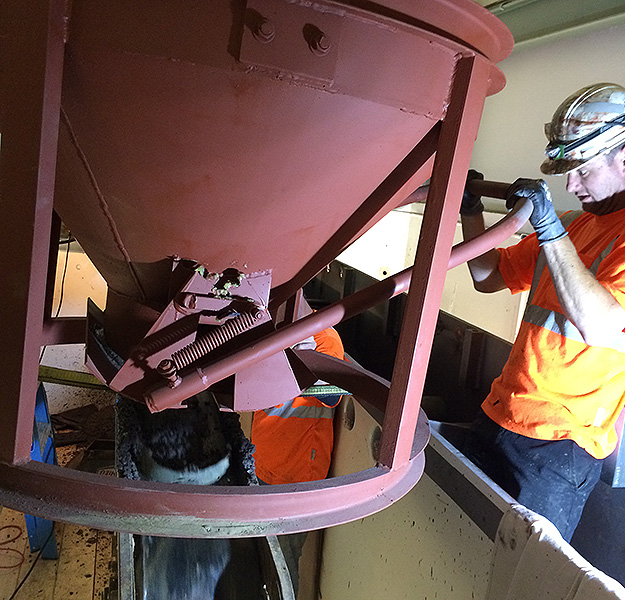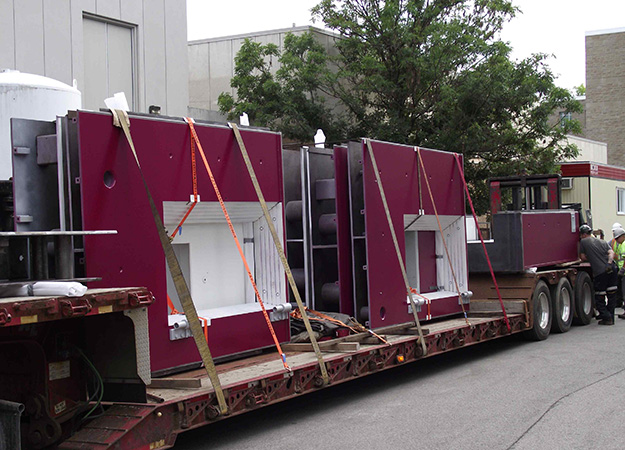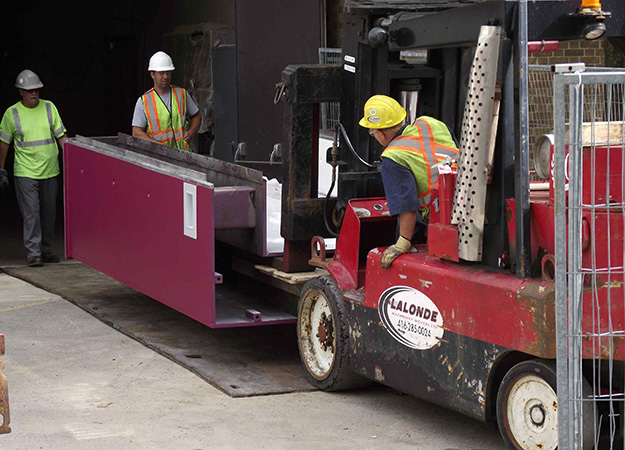Too hot to handle: Construction well underway at Centre for Advanced Nuclear Systems

The concrete used in Wednesday's installation at McMaster's Centre for Advanced Nuclear Systems is the highest density ever poured in Canada, and possibly in North America. At 64 per cent the density of steel, the concrete is a necessary measure to ensure proper radiation shielding.
One of the first universities in the world to have a research nuclear reactor is building another one-of-a-kind facility.
On Wednesday, contractors began pouring high-density concrete in the McMaster Accelerator Building, filling the space between one-inch steel panels in a suite of five “hot cells.”
Once complete, the cells will function as self-contained nuclear research chambers in McMaster’s Centre for Advanced Nuclear Systems, slated to open in March, 2015.
According to project director John Luxat, the facility is a global first.
“This lab will be the only one its kind located on a university campus, in terms of size and capability to handle irradiated materials from nuclear power reactors,” said Luxat, a professor and NSERC/UNENE senior industrial research chair in the Department of Engineering Physics.
“Comparable and larger facilities exist at a number of national laboratories in some countries, but not at a university.”
Hot cells are used to examine samples of irradiated material in a safe, controlled environment.
Researchers use remotely operated mechanical grips to manipulate and prepare samples of radioactive material, such as nuclear fuel channel components, from behind a barrier of thick glass, steel and high-density concrete walls.
The cells at McMaster will fall into three distinct categories: receiving, machining and a large “canyon cell” for sample preparation, mechanical testing and examination of incoming material.
The machining cells will be used to section-off pieces of material for testing (or further size reduction in the canyon cell), allowing researchers to study a range of material characteristics and how they’re changed by in-reactor irradiation.
“There are numerous practical applications for this research,” said Luxat. “We’ll be able to gain new scientific and engineering knowledge from studying material at an atomic level, and nuclear power reactor operators around the globe can receive information and assess the impacts of irradiation on in-reactor materials.”
The team has already received requests for collaboration from across Canada and beyond.
The concrete used in Wednesday’s installation is the highest density ever poured in Canada, and possibly in North America, explained Luxat. At 64 per cent the density of steel, the concrete is a necessary measure to ensure proper radiation shielding.
Due to the quick-drying nature of the concrete, workers used an innovative small-batch mixing and a semi-continuous pouring method during Wednesday’s installation.
The Canadian Foundation for Innovation contributed $9.17-million toward the Centre for Advanced Nuclear Systems, a figure that was matched by the Ontario Ministry of Research and Innovation. Additional funding for the $24.5-million facility came from in-kind contributions.
Design of the hot cells was undertaken by Merrick and Company, based in Denver, Colorado. Fabrication of the hot cells was performed by a local company, Superior Boiler Works and Welding, located in Stoney Creek, Ont.
Below: Workers carefully unload the new custom-designed heat cells into the McMaster Accelerator Building:




